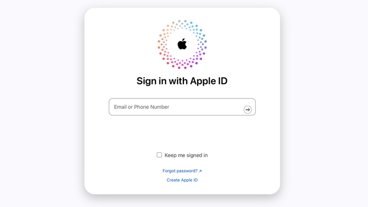Inside MobileMe: Secrets of the Cloud and Mobile Push
Inside MobileMe: Secrets of the Cloud and Mobile Push
What it is
While the launch of MobileMe didn't go smoothly as planned, the service itself is brilliantly well designed, both usable and attractive (despite some remaining flaws), and demonstrates the real potential of the future of web apps and web services. The pioneering service is also the first consumer-oriented, low-priced push mail, contacts, calendar, and bookmarks solution for any platform. MobileMe is actually a collection of three layers of components: Apple's hosted web apps, its cloud of online services, and its client-side push and sync applications on the iPhone and for the Mac and Windows PC desktop.Â
The web apps: the online side of MobileMe is composed of five apps (Mail, Contacts, Calendar, Gallery, and iDisk) and an admin page, all developed using the SproutCore JavaScript framework. That makes them accessible from any modern, standards-based web browser without the need to download some kind of extra middleware. Apple does warn Internet Explorer 7 users that Microsoft's browser "has known compatibility issues with modern web standards which affect Web 2.0 applications such as MobileMe," and recommends users try Firefox 3 or Safari 3 instead.
Internet Explorer does seem to work with MobileMe web apps for the most part however. Apple's warning does a good job of explaining to customers why they are better served by using a modern, standards-compliant browser. In contrast, iPhone users trying to navigate AT&T's billing website are likely to run across the Microsoft Automated Service Agent, which serves as an answer wizard for users with questions about their bill. When started from Safari however, the application complains, "sorry, but your browser does not allow this application to run," despite there being no actual problem with running the simple help tool in Safari.
The MobileMe web apps all share a cohesive look that reflects the appearance of the Mac OS X desktop. We'll profile the web apps of MobileMe separately in future segments of this series. These web apps only provide an interactive face to Apple's back end MobileMe servers however.
The server cloud: The real work behind the scenes is handled by the same servers Apple used to deploy .Mac. That includes what email headers reveal to be "Sun Java(tm) System Messaging Server 6.3-7.02 (built Jun 27 2008; 64bit)" for its SMTP email servers.Â
For web services, Netcraft reports that Apple uses a mix of Mac OS X, Solaris, and Linux servers across its various sites, but identifies the www.me.com domain as running on Linux. However, it also identifies the www.me.com web server as being "Apache/1.3.33 Darwin," indicating that Apple either has its own Mac OS X Server machines in the mix, that it uses a hybrid system of multiple server types, or that Netcraft is not able to correctly determine what Apple is actually using on the back end. For me.com, Netcraft reports an "unknown" operating system running Apache/1.3.26 Darwin. Â
Apple has only controlled the me.com for the last few months. If we look at mac.com and its subdomains, which Netcraft has monitored for years (and which are still in use under MobileMe), we find a mix of Apache/1.3.33 Darwin (Mac OS X Server), NS_6.1 and NS8.0.49.2 (which appear to be Citrix Netscalers, a web application accelerator appliance that performs load balancing and protects against DoS attacks; these are also used by everyone from Amazon to YouTube. The real web servers hide behind these), NetCache appliance NetApp/6.0.5 (which may be hardware in use by Akamai, a company Apple uses to mirror website content for optimized download;Â Akamai's mirrors may also account for why www.mac.com appears to be hosted on Linux), as well as something that identifies itself as AppleIDiskServer, which also runs on that "unknown" server OS, and often behind NetCache appliances.Â
AppleIDiskServer is what Apple used and continues to use to serve up iDisk shares via WebDAV at idisk.mac.com. It also serves up web.mac.com and homepage.mac.com, highlighting the fact that WebDAV is really just a bidirectional webserver that can both serve up data and allow updates. HomePage was (and is) a WebObjects application, no doubt running on Mac OS X Server (aka the "unknown" OS).Â
HomePage is still live under MobileMe, and even still sports the old .Mac branding and the brushed metal appearance from the branding era it was released in half a decade ago (below). The .Mac Groups is also still live (although Apple isn't taking any new applications for Groups from MobileMe subscribers), but iCards and the .Mac Bookmarks page are now dead, and the Mail and Address Book links now direct users to the new MobileMe web apps.
It appears Apple also uses its own custom software for its MobileMe sync services. The company considers the exact nature of its MobileMe servers to be a proprietary secret, and would not reveal any details on what it actually uses on the backend, even to developers under non-disclosure agreements at WWDC.Â
While the launch of MobileMe ran into problems and suffered outages, its cloud infrastructure is not the amateur befuddlement that some pundits like to make it out to be. Apple uses the same enterprise class hardware and deployment partners as other major Internet sites, and can be expected to occasionally run into the same kinds of problems that caused Amazon's entire US retail store to fall offline for hours back in June, or that just dumped Google's apps and its Gmail service (even for paid premier users) offline and unavailable for 15 hours earlier this week, neither of which was associated with a major update or new service transition.Â
Steve Jobs' recent appointment of Eddy Cue to serve as Apple's vice president of Internet services is noteworthy, as Cue has previously managed to success the highly regarded iTunes Store. He will now also be overseeing both MobileMe and the mobile Apps Store. In his email to Apple employees, Jobs wrote, "the MobileMe launch clearly demonstrates that we have more to learn about Internet services [...] we will press on to make it a service we are all proud of by the end of this year."
The client apps: MobileMe's launch problems were mostly related to the new web apps and related backend changes to accommodate them. On the client side, things went more smoothly because there wasn't as much change to manage in the migration from .Mac to MobileMe. For standard POP or IMAP email, any email program can still access MobileMe in the same way they'd connect to Gmail or any other standard mail account.Â
Similarly, any standard client app that can access WebDAV file shares should also be able to connect to MobileMe's iDisk, just as before. Mac OS X can connect to and mirror the MobileMe iDisk to appear as a local drive, and Windows can attach to iDisk shares natively in the Windows Explorer or via the web interface. None of this has really changed from .Mac.
MobileMe's push messaging is new; support for it is integrated into the new iPhone 2.0 software, which despite being entirely new worked pretty well, as long as the cloud was puffing along appropriately. There's still no way to access some MobileMe features on the iPhone, including iDisk files or Back To My Mac file shares. It's also currently impossible to access any of the MobileMe web apps themselves. If you try to pull up me.com in Safari on the iPhone, it simply directs you to use the standard apps on the phone instead (below). So much for Steve Jobs' real Internet.
Of course, given the iPhone's intentional inability to actually download or upload files from the browser, and the duplication between its native apps and the web apps, the lack of to access MobileMe web apps within mobile Safari is mainly an annoyance only because the web apps offer a handy way to troubleshoot problems. Apple should at a minimum publish its system status information on the me.com redirect page it serves up to its mobile users, so when the service does run into problems, users can have some idea of what's going on.
The next Inside MobileMe segment will look at MobileMe on the Mac and PC desktop, and how mobile push differs from desktop sync, followed by a comparison of how the service stacks up in features and price against other competing offerings.
 Prince McLean
Prince McLean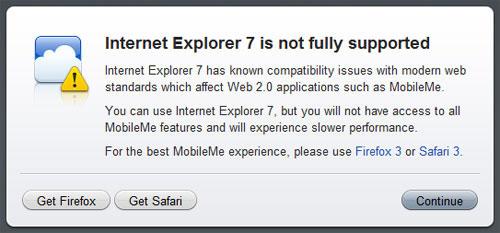
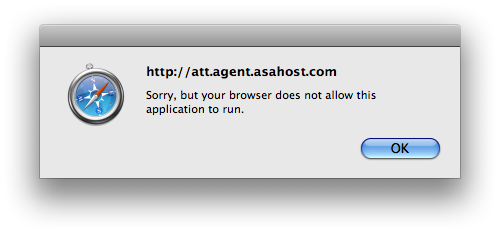
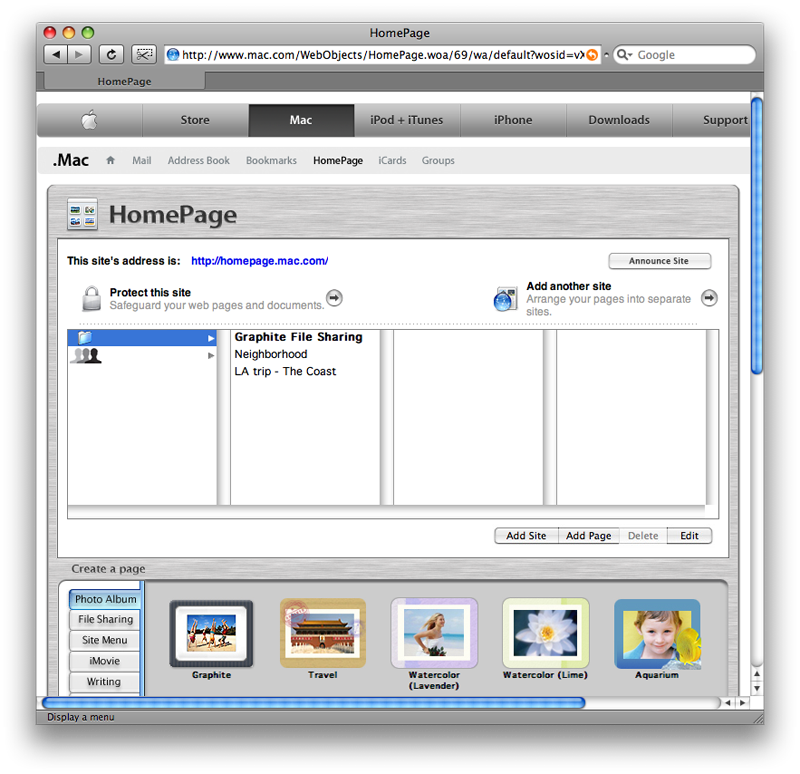
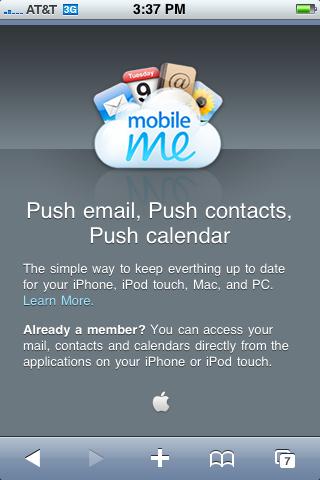











 Mike Wuerthele
Mike Wuerthele

 Malcolm Owen
Malcolm Owen
 Chip Loder
Chip Loder

 William Gallagher
William Gallagher
 Christine McKee
Christine McKee
 Michael Stroup
Michael Stroup